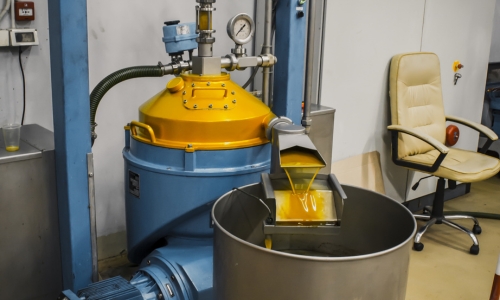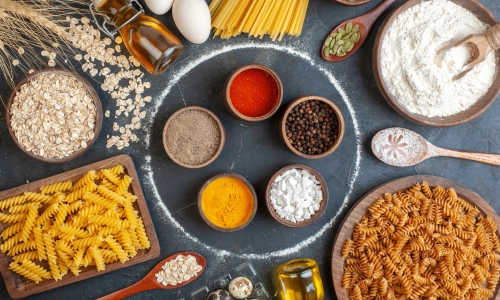
Introduction
- The word ‘extrusion’ has its origin from the Latin word ‘extrude’, which means ‘thrust out’ or ‘force out’.
- Extrusion is a technique in which a material is squeezed under high temperature and pressure through a die or an orifice of the desired cross-section.
- Food extrusion is a technique in which a material is pushed to flow under varied conditions by combining thermal and mechanical treatment through a die (shaped hole) at a predetermined rate to produce various products.
- Extrusion cooking is defined as a combination of thermal and mechanical treatment by which protein or starch-rich ingredients are plasticized and cooked in a cylinder to obtain a predefined shape.
Principle
- An extrusion is a combination of multiple unit operations, the operating principle of which is the same in all types.
- The food components are compressed, mixed, sheared, kneaded and cooked to a molten state. The molten components are then extruded through a thin die to produce semi-cooked or cooked food with minimal nutritional loss [1].
Advantages
- Extrusion technology is a more efficient and cost-effective technique for producing food than labour-intensive processes such as batch cooking.
- The capacity of extrusion technology to offer a food-safe cooking procedure with an industry-standard Critical Control Point (CCP) for product temperature is another significant benefit. This guarantees that the finished product is safe for pet consumption in addition to being of the highest quality.
- Continuous operation of the production line.
- High production volumes compared to traditional batch cooking.
- Good mixing (Compounding) of the product when more ingredients are used. Extrusion can be used for various combinations of ingredients, such as millet, whey, dough and meat.

Disadvantages
- Extrusion food processing has drawbacks such as a high upfront cost and the need to carefully choose process variables like moisture content, feed particle size, feed rate, screw speed, temperature, screw configuration, and die shape to prevent the formation of hazardous and reactive substances [2].
Advancements in extrusion technology:
- The pet food business has seen a shift in extrusion technology in recent years toward sustainability and energy efficiency. Thermal energy systems, in particular, are becoming more and more popular because of their energy-efficient and renewable features.
- Extrusion gives processors the freedom to use local ingredients, and the extruder’s fast adjustment of process parameters to operating conditions lowers product loss.
- The biggest developments in extrusion technology in recent years have been in energy efficiency and process sustainability, and they are continuously developing.
- Thermal energy (steam or surface heating) has attracted interest because these systems can be electric (which are renewable) or even very energy efficient with closed-cycle surface heating systems (extruder barrel elements). Recent observations of improved food taste produced by cooking with thermal energy instead of mechanical energy fit well with sustainable demand [3].





